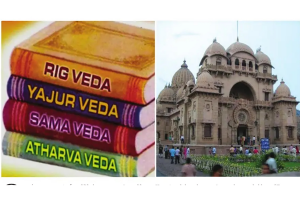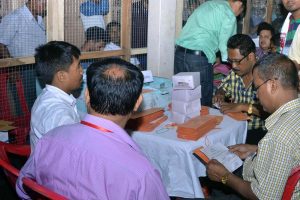John Locke, the eminent English political theorist of the seventeenth century, posited the idea that individuals were fundamentally good.
However, he acknowledged the necessity of laws to restrain ‘the few desperate men in society’. Yet, the question arises: how were these select ‘desperate men’ kept in check during the colonial era? In the sprawling tapestry of Kolkata’s history, there exist shadows that whisper tales of colonial intrigue, where the echoes of imperial rule reverberate through the haunting corridors of mental asylums and prisons.
Through the muted echoes of time, we peer into the gloom of these colonial institutions, where the ghosts of a bygone rule still whisper tales of confinement and constraints of imperial authority. Until 1836, prisons did not attract significant public attention.
Advertisement
The catalyst for a paradigm shift occurred with the murder of Thomas Richardson, the Magistrate of 24 Parganas and the Superintendent of the jail at the Presidency of Calcutta. Prison reform advocate EC Wines noted that this incident served as the immediate impetus for a comprehensive inquiry into the jail system.
The investigation revealed that, at that juncture, prison discipline predominantly focused on the physical well-being of inmates, with limited attention devoted to moral relations and agencies.
Thomas Babington Macaulay, the law member of the Supreme Council of India, prepared a report expressing the notion that an effective criminal code would be futile without a robust mechanism for punishment—a foundational ideology shaping prisons during that era.
The report proposed key reforms, including the abolition of outdoor labour, widespread adoption of indoor work, implementation of the separate system, improved convict classification, meticulous separation of untried prisoners, establishment of central or convict prisons, and the regulation of the prison system through the appointment of prison inspectors. In 1836, Lord William Bentick instituted the Prison Discipline Committee, chaired by H Shakespeare, a member of the Governor General’s Council.
This committee, also known as the Prison Discipline Committee, presented its findings to Lord Auckland in 1838. The report highlighted rampant corruption, lax discipline, and the practice of employing prisoners in extramural labour. The committee advocated for more stringent measures and rejected notions of reforming criminals through moral and religious teachings or reward systems for good conduct. Such is evident when one takes a look at the Alipore Jail (now museum) in Kolkata.
The architectural blueprint of the buildings within the Alipore Central Jail impeccably mirror the prevailing colonial principles that governed the administration of prison facilities. Despite sharing the same ward, stringent measures were implemented to prevent any form of communication between inmates.
The deliberate placement of narrow stone beds, coupled with headrests positioned in alternating orientations, was a calculated design choice aimed at curtailing conversations between adjacent prisoners. Internally, the cells were further compartmentalised with partition walls, ensuring that no more than fifty inmates could be accommodated within each division.
This meticulous spatial organisation, as articulated in the 1838 Macaulay Committee Report, was intended to enforce the segregation of inmates and maintain a state of isolation. The overarching philosophy behind colonial-era prisons in India emphasised confinement as a means to categorise criminals and establish colonial distinctions. The design of the Alipore Central Jail, later known as the Alipore Correctional Home, adhered to the radial and cost-effective blueprint inspired by the Pentonville Jail in London (a panopticon).
Constructed in the nineteenth century, these radially arranged prisons featured a centrally positioned watchtower rising twelve metres tall in the courtyard. This tower served as a vigilant site of surveillance, rendering it nearly impossible for inmates to evade the scrutiny of prison sentinels.
The concept of the panopticon was introduced by English philosopher Jeremy Bentham in the late 1700s. The layout, completed in 1785, featured a central tower surrounded by a ring of cells, each open to the tower. This architectural innovation allowed a minimal number of guards to observe a large number of prisoners without the need for physical dominance. The prisoners, aware of potential surveillance but uncertain when observed, internalised discipline. This unique approach transformed the concept of authority, emphasising the power of constant awareness over physical control.
As documented in the Bengal Gazetteer of 1914, the Alipore Central Jail was lauded as a “modern prison with modern improvements”, encapsulating the evolution and adaptation of penal architecture in line with contemporary standards. The Alipore Jail also housed the gallows where freedom fighters including Anantahari Mitra (1926), Promod Ranjan Chowdhury (1926), Dinesh Gupta (1931), Ramkrishna Biswas (1931) and Dinesh Mazumdar (1934) were martyred.
It is commonly understood that during the colonial era’s capital punishment proceedings, a practice existed wherein certain prisoners were confined in a structure positioned in view of the gallows.
This arrangement allowed them to witness the execution of their fellow inmates. The British also employed trees, particularly fig and banyan trees, as makeshift gallows for hanging rebels and prominent offenders. This method predates the introduction of the gallows.
The purpose of these public executions extended beyond punishing the convicted rebels; they aimed to instil fear among the general populace. Such public acts of brutality were particularly prevalent during the harsh suppression of the 1857 rebellion and its aftermath.
The Police Training School, situated off the race course on Acharya Jagadish Chandra Bose Road, holds a compelling colonial history. In 1914, Sir Frederick Halliday, the Commissioner of Police, Calcutta, successfully established the Police Training School here after an eight-year effort. This initiative streamlined the training of police recruits, eliminating the need to send them to Bhagalpur. Over time, the building gained notoriety as Charles Tegart transformed it into an interrogation centre for Bengal’s freedom fighters.
The property’s somewhat prison-like architectural design, featuring a central structure surrounded by a circular formation reminiscent of Jeremy Bentham’s panopticon, contributed to its dubious reputation. Tegart, the former Police Commissioner of Calcutta, played a notorious role in the pages of Kolkata’s colonial history, particularly at the Jorabagan Police Station. Known for his brutal methods during the period of India’s struggle for independence, Tegart turned the police station (formerly Duff College) into an infamous interrogation centre.
His interrogation techniques were marked by ruthless brutality, involving physical and psychological torment inflicted upon freedom fighters. The chilling atmosphere at Jorabagan Police Station under Tegart’s command earned it a dark reputation as a site of oppression and cruelty during a tumultuous chapter in India’s fight for freedom.
The Police Training School, however, was previously a mental asylum, or a lunatic asylum for native Indians called Dalanda House, as it was known then. The name Dalanda traces its origins to ‘dullundah’, one of the 55 villages acquired by the East India Company in 1758. The Europeans had another mental facility at Bhawanipore, which was known as the European Lunatic Asylum or the Beardsmore Hospital, initially owned for forty years by one Mr I Beardsmore. In the early 19th century, it was opted to construct distinct facilities for ‘native criminally insane and wandering lunatics’.
The first attempt involved establishing the Bengal Presidency Native Insane Hospital near Russapagla in the 24 Parganas region adjacent to the district jail in 1816. Despite a meagre budget, the facility was intended for 50- 60 patients, but by 1834, records revealed a staggering 267 patients with minimal financial support. In 1842, reports described the hospital as “filthy, crowded, defaced and broken”.
Recognising the deplorable conditions, plans for a new hospital materialised, resulting in the Dalanda Lunatic Asylum. In September 1847, patients from Russapagla hospital were relocated to the Dalanda House. This asylum, designed for 150 patients, ended up accommodating nearly double that number. From 1863 to 1867, out of a total of 2,274 patients admitted in asylums of Bengal, 514 died and 858 declared cured.
In a research paper titled A New Knowledge of Madness Nineteenth Century Asylum Psychiatry in Bengal, published in the Indian Journal of History of Science, Amit Ranjan Basu writes, Arthur Payne, the then Superintendent of Asylums of Presidency was of the opinion that, “the fatality among non-working men is beyond all proportions, greater than among the working class.”
Hence, the inmates were engaged in labour, albeit characterised as ‘voluntary’. This involved a range of activities such as cultivating gardens, manufacturing castor oil, producing mustard oil, manufacturing soorki, weaving gunny and coir, grinding wheat, participating in road construction and erecting compounds. These endeavours constituted productive businesses that generated substantial profits for the asylums.
The ghosts of the past linger in the shadows of Kolkata’s history. As we reflect on these historical nuances, it becomes evident that the imprints of colonial rule have left a lasting impact, both on the physical structures that stand today and the collective memory of a city that has witnessed the convergence of monstrosity, resistance and the quest for freedom.
The author is a journalist on the staff of The Statesman.
Advertisement












